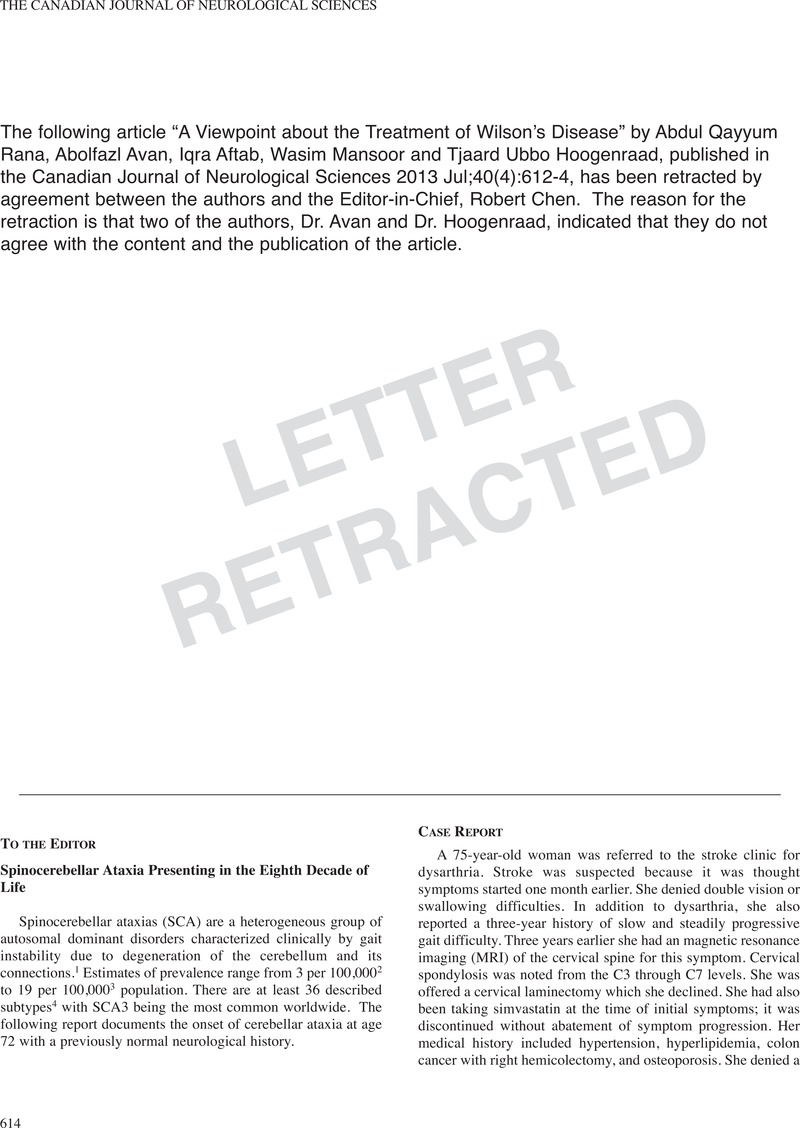No CrossRef data available.
Article contents
Spinocerebellar Ataxia Presenting in the Eighth Decade of Life
Published online by Cambridge University Press: 23 September 2014
Abstract
An abstract is not available for this content so a preview has been provided. As you have access to this content, a full PDF is available via the ‘Save PDF’ action button.

- Type
- Letters to the Editor
- Information
- Copyright
- Copyright © The Canadian Journal of Neurological 2013
References
1.
Schols, L, Bauer, P, Schmidt, T, Schulte, T, Riess, O.
Autosomal dominant cerebellar ataxias: clinical features, genetics, and pathogenesis. Lancet Neurol. 2004 May;3(5):291-304.CrossRefGoogle ScholarPubMed
2.
van de Warrenburg, BP, Sinke, RJ, Verschuuren-Bemelmans, CC, et al.
Spinocerebellar ataxias in the Netherlands: prevalence and age at onset variance analysis. Neurology. 2002 Mar 12;58(5):702-8.Google Scholar
3.
Shibata-Hamaguchi, A, Ishida, C, Iwasa, K, Yamada, M.
Prevalence of spinocerebellar degenerations in the Hokuriku district in Japan. Neuroepidemiology. 2009;32(3):176-83.Google Scholar
4.
Ikeda, Y, Ohta, Y, Kobayashi, H, et al.
Clinical features of SCA36: a novel spinocerebellar ataxia with motor neuron involvement (Asidan). Neurology. 2012 Jul 24;79(4):333-41.CrossRefGoogle ScholarPubMed
5.
Gomez, CM, Thompson, RM, Gammack, JT, et al.
Spinocerebellar ataxia type 6: gaze-evoked and vertical nystagmus, Purkinje cell degeneration, and variable age of onset. Ann Neurol. 1997 Dec;42(6):933-50.CrossRefGoogle ScholarPubMed




